Nec e232 Handleiding
Nec
Mobiele telefoon
e232
Bekijk gratis de handleiding van Nec e232 (88 pagina’s), behorend tot de categorie Mobiele telefoon. Deze gids werd als nuttig beoordeeld door 48 mensen en kreeg gemiddeld 4.3 sterren uit 24.5 reviews. Heb je een vraag over Nec e232 of wil je andere gebruikers van dit product iets vragen? Stel een vraag
Pagina 1/88

i
Emergency Services and Safety Precautions
Emergency Services
To make an emergency call in any country
☛ Press 1 1 2 .
Ask the operator for the service which you require: Police, Ambulance, Fire Brigade,
Coastguard or Mountain Rescue Services. Give your position and, if possible, remain
stationary to maintain phone contact.
The 112 emergency number service is available on every digital network service. The
number 999 is an alternative emergency number for the UK only, and can only be used
with a valid SIM card.
2Due to the nature of the cellular system, the success of emergency calls cannot be guaranteed.
General Care
A cellphone contains delicate electronic circuitry, magnets, and battery systems. You
should treat it with care and give particular attention to the following points.
•Do not allow the phone or its accessories to come into contact with liquid or moisture
at any time.
•Do not place anything in the folded phone.
•Do not expose your phone to extreme high or low temperatures.
•Do not expose your phone to naked flame, cigars or cigarettes.
•Do not paint your phone.
•Do not drop or subject your phone to rough treatment.
•Do not place the phone alongside computer disks, credit cards, travel cards and other
magnetic media. The information contained on disks or cards may be affected by the
phone.
•Do not leave the phone or the battery in places where the temperature could exceed
60°C; e.g. on a car dashboard or on a window sill, behind glass in direct sunlight, etc.
•Do not remove the phone’s battery while the phone is switched on.
•Take care not to allow metal objects, such as coins or key rings, to contact or short-
circuit the battery terminals.
•Do not dispose of battery packs in a fire. Your phone's Li-ion batteries may be safely
disposed of at Li-ion recycling points. For more specific battery and power supply
information, see page 4.
•Do not put your phone's battery in your mouth as battery electrolytes may be toxic if
swallowed.
•Do not attempt to dismantle the phone or any of its accessories.
•This equipment is fitted with an internal battery that can only be replaced by a qualified
service engineer. There is a risk of explosion if the battery is replaced by an incorrect
type. Dispose of the used battery in accordance with the manufacturer's instructions.
•Using any battery pack, AC adapter, Vehicle power adapter (option) or Desktop
charger (option) not specified by the manufacturer for use with this phone creates a
potential safety hazard.
•The earpiece may become warm during normal use and the unit itself may become
warm during charging.
•Use a damp or anti-static cloth to clean the phone. Do NOT use a dry cloth or
electrostatically charged cloth. Do not use chemical or abrasive cleaners as these
could damage the case.
•Remember to recycle: the cardboard packaging supplied with this phone is ideal for
recycling.
•Do not leave the battery pack empty or disconnected for a long time, otherwise some
data may be initialized.
•Your phone contains metal which may cause you an itch, a rash or eczema depending
on your constitution or physical condition.
•Take care not to put your phone in the back pocket of your trousers or skirt and then
sit on it. Also, do not put your phone at the bottom of bag where it may subject to
excessive weight or pressure.
Doing so may damage the LCD and camera lens and cause them malfunction.
•Take care not to hold the Light too close to your or other people’s eyes when the Light
is lit.
Aircraft Safety
•Switch off your phone and remove its battery when inside or near aircraft. The use of
cellphones in aircraft is illegal. It may be dangerous to the operation of the aircraft and
it may disrupt the cellular network. Failure to observe this instruction may lead to
suspension or denial of cellphone service to the offender, or legal action, or both.
•Do not use your phone on the ground without the permission of the ground crew.
Hospital Safety
•Switch off your phone in areas where the use of cellphones is prohibited. Follow the
instructions given by the respective medical facility regarding the use of cellphones on
their premises.
General Safety
•Observe ‘Turn off 2-way radio’ signs, such as those near stores of fuel, chemicals or
explosives.
•Do not allow children to play with the phone, charger or batteries.
•Small parts are included in your phone. Keep them out of reach of small children, for
whom it could be a choking hazard.
•The operation of some medical electronic devices, such as hearing aids and
pacemakers, may be affected if a cellphone is used next to them. Observe any warning
signs and manufacturer's recommendations.
•If you have a weak heart, you should take extra precautions when setting functions
such as the Vibrator and Ringer volume functions for incoming calls.
•If you set the Vibrator setting to anything other than OFF, be careful that the phone is
not near a source of heat (e.g. a heater) and that it does not fall from a desk due to the
vibration.
Road Safety
•You MUST exercise proper control of your vehicle at all times. Give full attention to
driving.
•Observe all the recommendations contained in your local traffic safety documentation.
•Pull off the road and park before making or answering a call if driving conditions so
require.

ii
•You MUST NOT stop on the hard shoulder of a motorway to answer or make a call,
except in an emergency.
•Switch off your phone at a refuelling point, such as a petrol station, even if you are not
refuelling your own car.
•Do not store or carry flammable or explosive materials in the same compartment where
a radio transmitter, such as a cellphone, is placed.
•Electronic vehicle systems, such as anti-lock brakes, speed control and fuel injection
systems are not normally affected by radio transmissions. The manufacturer of such
equipment can advise if it is adequately shielded from radio transmissions. If you
suspect vehicle problems caused by radio transmissions, consult your dealer and do
not switch on your phone until it has been checked by qualified approved installers.
Vehicles Equipped with an Air Bag
An air bag inflates with great force. Do not place objects, including either installed or
portable wireless equipment, in the area over the air bag or in the air bag deployment
area. If in vehicle wireless equipment is improperly installed and the air bag inflates,
serious injury could result.
Third Party Equipment
The use of third party equipment, cables or accessories, not made or authorized by NEC,
may invalidate the warranty of your cellphone and also adversely affect the phone’s
operation. For example use only the NEC mains cable supplied with the AC charger.
Service
The cellphone, batteries and charger contain no user-serviceable parts. We recommend
that your NEC cellphone is serviced or repaired by an NEC authorized service centre.
Please contact your Service Provider or NEC for advice.
Non-Ionizing Radiations
The radio equipment shall be connected to the antenna via a non-radiating cable (e.g.
coax).
The antenna shall be mounted in a position such that no part of the human body will
normally rest close to any part of the antenna unless there is an intervening metallic
screen, for example, the metallic roof.
Use only an antenna that has been specifically designed for your phone. Use of
unauthorized antennas, modifications or attachments could damage your phone and
may violate the appropriate regulations, causing loss of performance and radio
frequency (RF) energy above the recommended limits.
Efficient Use
For optimum performance with minimum power consumption, note the following:
•Your phone has the internal antenna. Do not cover part of the internal antenna of the
phone with your hands. This affects call quality, may cause the phone to operate at a
higher power level than needed and may shorten talk and standby times.
Radio Frequency Energy
Your phone is a low-power radio transmitter and receiver. When it is turned on, it
intermittently receives and transmits radio frequency (RF) energy (radio waves). The
system that handles the call controls the power level at which the phone transmits.
Exposure to Radio Frequency Energy
Your phone is designed not to exceed the limits for exposure to RF energy set by
national authorities and international health agencies. * These limits are part of
comprehensive guidelines and establish permitted levels of radio wave exposure for the
general population. The guidelines were developed by independent scientific
organizations such as ICNIRP (International Commission on Non-Ionizing Radiation
Protection) through periodic and thorough evaluation of scientific studies. The limits
include a substantial safety margin designed to assure the safety of all persons,
regardless of age and health, and to account for any variations in measurements.
*Examples of radio frequency exposure guidelines and standards that your phone is
designed to conform to:
•ICNIRP, “Guidelines for limiting exposure to time-varying electric, magnetic, and
electromagnetic fields (up to 300 G Hz)-International Commission on Non-Ionizing
Radiation Protection (ICNIRP)”.
•Health Physics, vol. 74. pp, 494-522, April 1998.
•99/519/EC Council Recommendation on the limitation of exposure to the general
public to electromagnetic fields 0 Hz-300 GHz, Official Journal of the European
Communities, July 12,1999.
•ANSI/IEEE C95.1-1992. “Safety levels with respect to human exposure to radio
frequency electromagnetic fields, 3kHz to 300 GHz”. The Institute of Electrical and
Electronics Engineers Inc., New York, 1991.
•FCC Report and Order, ET Docket 93-62, FCC 96-326, Federal Communications
Commission (FCC), August 1996.
•Radio communications (Electromagnetic Radiation Human Exposure) Standard 1999,
Australian Communications Authority (ACA), May 1999.
Declaration of Conformity
This product complies with the requirements of the R&TTE Directive 1999/5/EC.
The ‘Declaration of Conformity’ leaflet can be found within this box.
Licenses
•T9® Text Input and the T9 logo are registered trademarks of Tegic Communication.
“T9 Text Input is licensed under one or more of the following:
U.S. Pat. Nos. 5,818,437, 5,953,541, 5,187,480, 5,945,928, 6,011,554, and
6,307,548; Australian Pat. No. 727539; Canadian Pat. No. 1,331,057; United Kingdom
Pat. No. 2238414B; Hong Kong Standard Pat. No. HK0940329; Republic of Singapore
Pat. No. 51383; Euro. Pat. No. 0 842 463 (96927260.8) DE/DK, FI, FR, IT, NL, PT. ES,
SE, GB; Republic of Korea Pat. Nos. KR201211B1 and KR226206B1; and additional
patents are pending worldwide”
•The James Bond Theme by Monty Norman
©EMI Unart Catalog Inc. (BMI)
All Right Reserved. International Copyright Secured. Used by permission.
•©2002 Music Airport Inc., http://www.music-airport.com/
•RSA™ is a registered trademark of RSA Data Security Inc.
•OPENWAVE™ is a registered trademark of Openwave Systems Inc.
For the purpose of improvement, the specifications for this product and its accessories
are subject to complete or partial change without prior notice.

iii
Before You Start
Cellphone system structure
It is worth remembering that every time you use your phone, three or four different organizations are involved:
All the features described in this user’s manual are supported by your phone. However, for all these features to work, you must have a SIM card (supplied
by your Service Provider) that also supports these features. Even if you have a fully featured SIM card, any feature not supported by the Network
transmitting your call will not work. This last point is especially important when you are roaming networks (see page 13).
User’s manual conventions
The instructions in this user’s manual make use of the shortcuts selection except special cases.
The following markers are used throughout the user manual to attract your attention:
/This type of paragraph will contain details of where to find information related to the topic in question.
2This type of paragraph will contain information worth noting.
,This type of paragraph will contain important information.
The people that supply
your SIM card and bills
Service
Provider
The people that
transmit your calls
Network
The people that
provide your Internet services
WAP Service Provide
r
The people that
make your phone
Product specificaties
| Merk: | Nec |
| Categorie: | Mobiele telefoon |
| Model: | e232 |
Heb je hulp nodig?
Als je hulp nodig hebt met Nec e232 stel dan hieronder een vraag en andere gebruikers zullen je antwoorden
Handleiding Mobiele telefoon Nec

23 Mei 2023

20 Maart 2023

12 Maart 2023

5 Maart 2023

26 Januari 2023

1 Januari 2022

5 December 2022

20 November 2022
Handleiding Mobiele telefoon
- Oppo
- Razer
- Tiptel
- Sonim
- Lupilu
- Vodafone
- Bixolon
- Prestigio
- M3 Mobile
- Nothing Tech
- Plum
- Philips
- GPO
- Kyocera
- Oukitel
Nieuwste handleidingen voor Mobiele telefoon
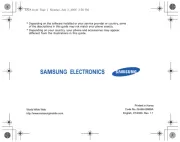
14 Juli 2025
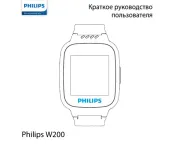
6 Juli 2025

5 Juli 2025
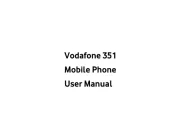
4 Juli 2025
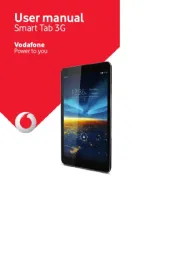
4 Juli 2025
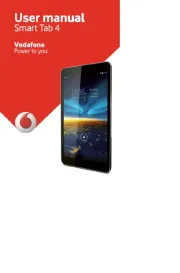
4 Juli 2025
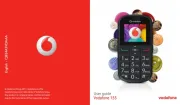
4 Juli 2025

4 Juli 2025
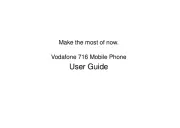
3 Juli 2025
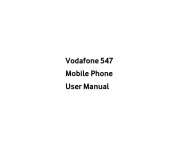
3 Juli 2025